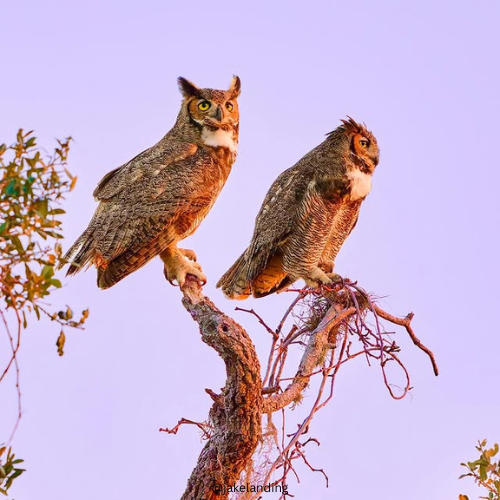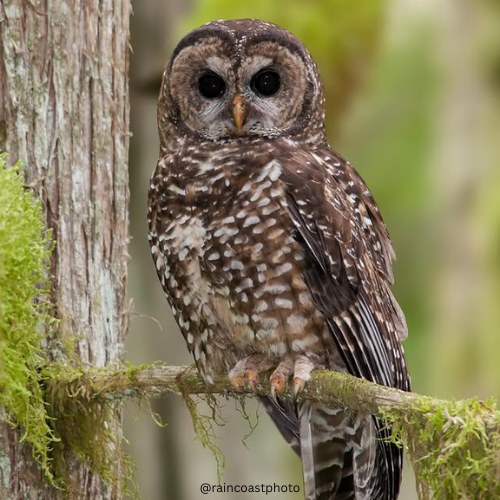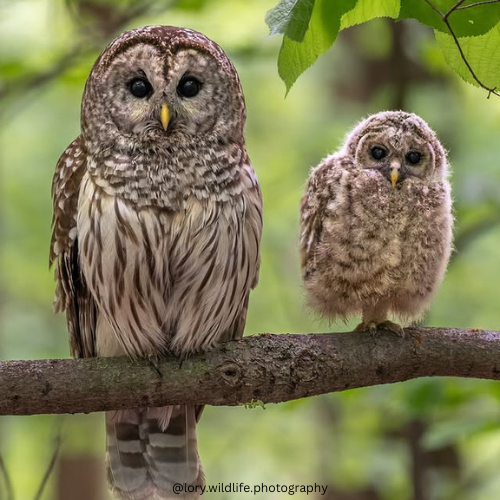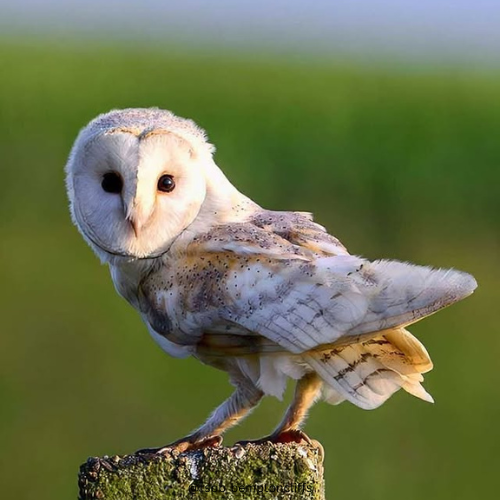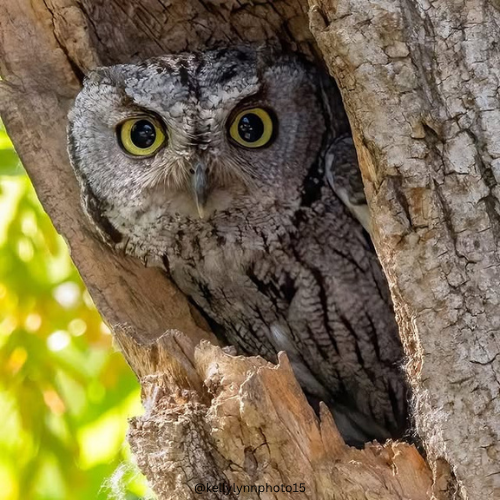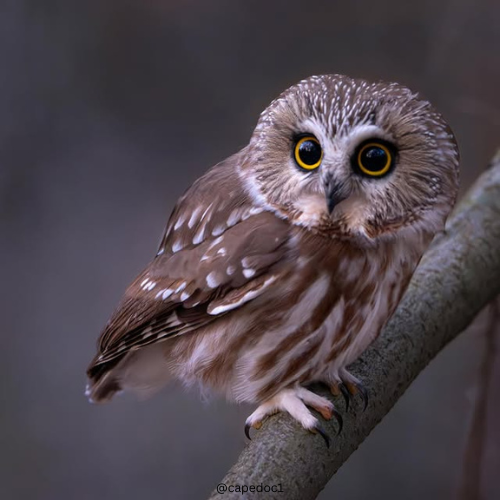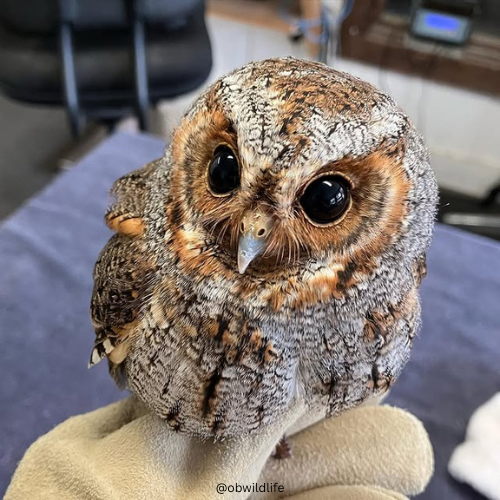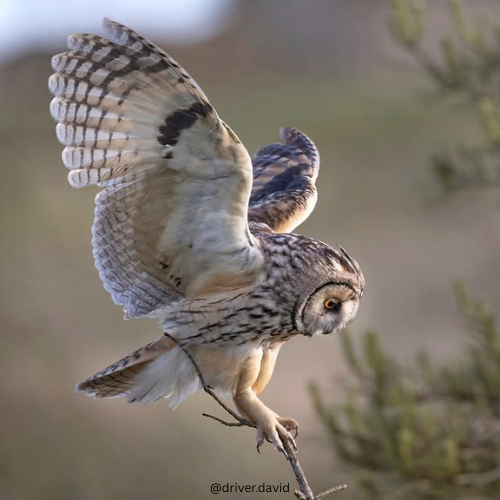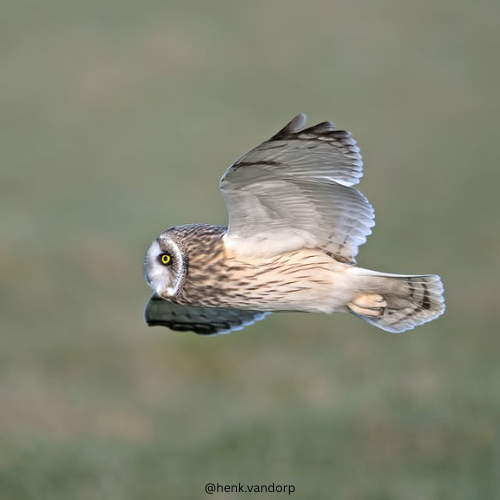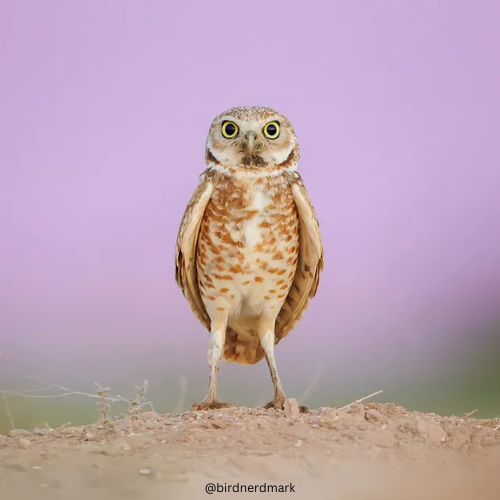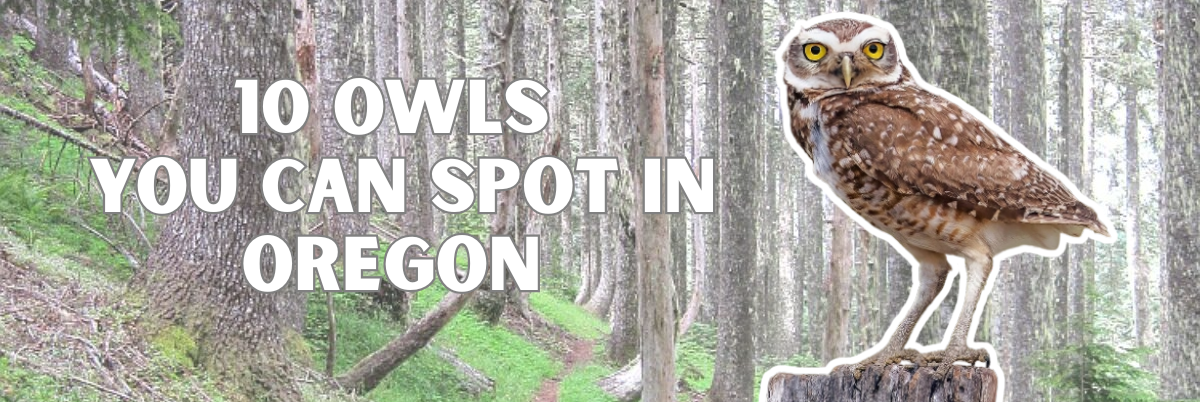
By Avian Feathers Team
Published July 2025
Oregon’s wild landscapes are made for owl watching. From coastal forests to high desert plains, these nocturnal birds call nearly every part of the state home. Some are common and vocal. Others are rare and hidden deep in the woods. But with a little patience and luck, you’re bound to spot (or hear) one of these mysterious hunters.
1. Great Horned Owl
This iconic owl is powerful, widespread, and easy to recognize. It has large ear tufts, piercing yellow eyes, and a deep hooting call that echoes through the night. Found in forests, deserts, cities, and farmland, the Great Horned Owl is Oregon’s most adaptable owl. It hunts rabbits, skunks, and even other birds. You can spot it perched on fence posts or tree limbs at dusk.
Size
Length: 18–25 in (46–64 cm)
Wingspan: 39–57 in (99–145 cm)
Weight: 2–5.5 lbs (0.9–2.5 kg)
Scientific Name: Bubo virginianus
2. Northern Spotted Owl
This owl is a conservation icon in the Pacific Northwest. Northern Spotted Owls need old-growth forests with big trees and dense canopy cover. They are medium-sized and have dark eyes and soft brown feathers with white spots. Their populations have declined due to logging and competition from Barred Owls. Spotting one is rare and always special.
Size
Length: 16–19 in (40–48 cm)
Wingspan: 39–48 in (99–122 cm)
Weight: 1.3–1.6 lbs (600–725 g)
Scientific Name: Strix occidentalis caurina
3. Barred Owl
Barred Owls are stocky with dark eyes and horizontal stripes across their chest. They are loud and curious, known for their classic call: “Who cooks for you? Who cooks for you all?”. Though native to eastern forests, they’ve moved west and now overlap with the Spotted Owl. They’re often found near rivers and wooded wetlands.
Size
Length: 16–25 in (40–63 cm)
Wingspan: 38–49 in (96–125 cm)
Weight: 1–2.5 lbs (500–1134 g)
Scientific Name: Strix varia
4. Barn Owl
With a heart-shaped face and ghostly white wings, the Barn Owl glides silently through Oregon’s countryside. These owls prefer open areas like fields, farmlands, and grasslands. You might spot one flying low at night or roosting in barns and abandoned buildings. Their harsh, screeching calls sound like something from a horror movie.
Size
Length: 12.5–16 in (32–41 cm)
Wingspan: 31–37 in (80–95 cm)
Weight: 14–24 oz (400–700 g)
Scientific Name: Tyto alba
5. Western Screech-Owl
Small, stocky, and big-eyed, this owl is common but often overlooked. Western Screech-Owls blend into tree bark perfectly, thanks to their gray and brown patterns. They prefer wooded suburbs, orchards, and canyon forests. Listen for their rhythmic “bouncing ball” call on warm evenings.
Size
Length: 7.5–10 in (19–25 cm)
Wingspan: 21–24 in (53–61 cm)
Weight: 3.5–11 oz (100–300 g)
Scientific Name: Megascops kennicottii
6. Northern Saw-whet Owl
This tiny owl has a big voice and even bigger eyes. The Northern Saw-whet Owl is known for its repetitive tooting call that sounds like a sharpening saw. It lives in conifer forests and prefers dense cover. It’s hard to spot, but with patience, you might catch a glimpse on a low perch at night.
Size
Length: 6.5–9 in (17–23 cm)
Wingspan: 16.5–22 in (42–56 cm)
Weight: 2.3–5.3 oz (65–151 g)
Scientific Name: Aegolius acadicus
7. Flammulated Owl
One of Oregon’s rarest owls, the Flammulated Owl is tiny and quiet. It’s named for its flame-like markings and soft, low-pitched hoots. It favors high-elevation pine forests and can be very hard to find. Birders often search for it in late spring or summer during its brief nesting window.
Size
Length: 5.9–6.7 in (15–17 cm)
Wingspan: 14 in (36 cm)
Weight: 1.5–2.2 oz (43–63 g)
Scientific Name: Psiloscops flammeolus
8. Long-eared Owl
Tall, slim, and shy, the Long-eared Owl is a master of camouflage. Its long ear tufts and streaky feathers help it disappear in dense tree cover. These owls are nocturnal and prefer hunting in open fields after sunset. In winter, they roost communally in thick groves.
Size
Length: 13.5–16 in (34–40 cm)
Wingspan: 35–39 in (90–100 cm)
Weight: 7.8–15 oz (220–425 g)
Scientific Name: Asio otus
9. Short-eared Owl
Unlike most owls, Short-eared Owls are often active in daylight, especially at dawn and dusk. They fly low over open fields with floppy, moth-like wingbeats. In Oregon, they favor grasslands, marshes, and agricultural fields. Watch for them in winter when they’re more visible.
Size
Length: 13–17 in (34–43 cm)
Wingspan: 33–43 in (85–110 cm)
Weight: 7–17 oz (200–480 g)
Scientific Name: Asio flammeus
10. Burrowing Owl
This quirky owl lives on the ground. Burrowing Owls nest in old prairie dog holes and gopher burrows. They are small, long-legged, and active during the day. In Oregon, you’ll find them in the eastern part of the state, especially in wide open, dry grasslands.
Size
Length: 7.5–10 in (19–25 cm)
Wingspan: 21–24 in (53–61 cm)
Weight: 5.3 oz (150 g)
Scientific Name: Athene cunicularia
Where to Spot Owls in Oregon
Oregon’s varied environments offer numerous opportunities to encounter these captivating owls:
Great Horned Owl: Extremely common and adaptable. Found nearly everywhere from dense forests, urban parks, suburban areas, farmlands, and deserts across all of Oregon. Listen for their deep, resonant hoots after dark.
Northern Spotted Owl: Rare and primarily found in old-growth coniferous forests in western Oregon, particularly in the Coast Range, Western Cascades, and Klamath Mountains. Spotting requires patience and often local knowledge.
Barred Owl: Common and widespread in wooded swamps, riparian forests, and mixed woodlands throughout Oregon, having expanded westward. Listen for their distinctive “Who cooks for you?” call.
Barn Owl: Prefers open country, grasslands, farmlands, and marshes in valleys and lowlands. Look for them flying low at dusk or dawn, or roosting in barns, silos, and abandoned buildings.
Western Screech-Owl: Common in wooded areas, suburban neighborhoods, orchards, and canyons across Oregon. Best detected by their distinctive “bouncing ball” call at night.
Northern Saw-whet Owl: Small and secretive, found in dense coniferous and mixed forests throughout the state, especially at lower to mid-elevations. Best found by listening for their repetitive “tooting” call after dark.
Flammulated Owl: One of Oregon’s rarest owls, found in high-elevation pine forests (ponderosa, lodgepole), particularly in eastern Oregon during summer. Extremely difficult to spot; listening for their soft, low hoots is key.
Long-eared Owl: Secretive and slender. They roost in dense conifers or thickets during the day and hunt in nearby open fields and grasslands at night. Often found in communal winter roosts in thick groves.
Short-eared Owl: Often active at dawn and dusk, found in open habitats like grasslands, marshes, and agricultural fields throughout Oregon, especially during winter. Look for their low, moth-like flight over the terrain.
Burrowing Owl: Primarily found in open, dry grasslands and shrub-steppes of eastern Oregon. Look for them perched near the entrance of ground squirrel or badger burrows, often active during the day.
Ready to explore Oregon’s mysterious nocturnal world? Grab your binoculars and listen closely – an unforgettable owl encounter might be just around the corner.

